Summers i with a Humanistic Outlook - 2017
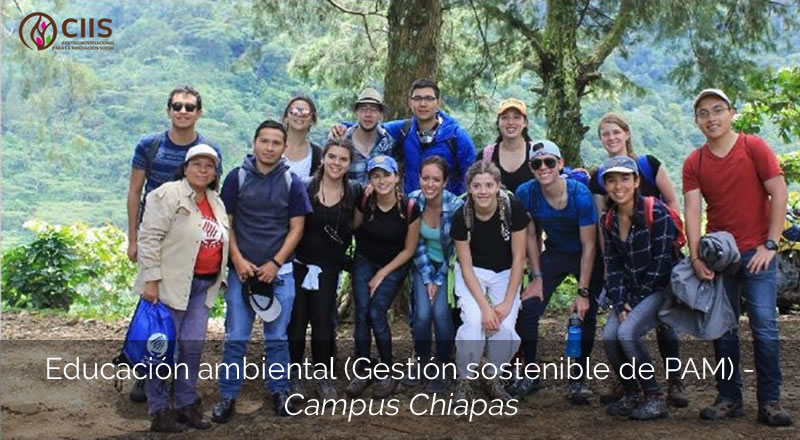
Context
The state of Chiapas has diverse needs associated with the different sectors that require proposals to solve their main problems. Their design should take into consideration aspects such as environmental protection, finance and social issues. One place in particular is the Nuevo Paraíso Community in the municipality of La Concordia, Chiapas, three hours away from the capital Tuxtla Gutiérrez. The main activities in Nuevo Paraíso are the production and marketing of organic coffee, adventure ecotourism, coffee tasting, the production of coffee plants, and the operation of a small restaurant that serves local food. With the background of projects of the projects carried out in the semester i, the education partner Puerta a la Montaña began to generate changes in its alternative ecotourism itinerary, explore new options and open up to a foreign market segment in addition to the domestic offering. This event marked a before and after with the number of people served every year as the reference framework. However, the hard work did not end there, since now a new effort was needed to formally protect the environment and available natural resources in the core zone of the El Triunfo Biosphere Reserve.
Challenges
Students were set the following challenges:
- Search for alternative ecotourism proposals.
- Proposal to create an illustrative map and signs for the ecotourism route.
- Establish a theoretical framework for environmental education focused on the use of natural resources.
- Achieve an improvement in the culture of organic food consumption.
Outcomes
The outcomes of the intervention were::
- Increase in organic food consumption.
- Education in self-sustainability as part of family economy savings.
- Approach to environmental education with a focus on tourism
- Substitution of some practices that do not comply with environmental education and its purpose of zero chemicals.
- Ten-step practical environmental partner workshop for Puerta a la Montaña participants.
- Promotion of local employment as service providers.
- Design of educational subjects using the region’s environmental and cultural diversity
Sustainable Development Goal(s)
The SDGs linked to the challenge are:
- 3- Ensure healthy lives and promote well-being for all at all ages.
- 5- Achieve gender equality and empower all women and girls.
- 15- Protect, restore and promote sustainable use of terrestrial ecosystems, sustainably manage forests, combat desertification, and halt and reverse land degradation and halt biodiversity loss.
Education partner organization
The bridge between the actors of the block and society was:
Puerta a la Montaña (PAM)
Population
The sector of the population impacted was:
Nuevo Paraíso community, municipality of La Concordia. Chiapas.
Families from Puerta a la Montaña.
Learn more
The following images (PDF file) show some examples of the activities that students carried out in conjunction with the educational partner organization and the inhabitants of the different communities.
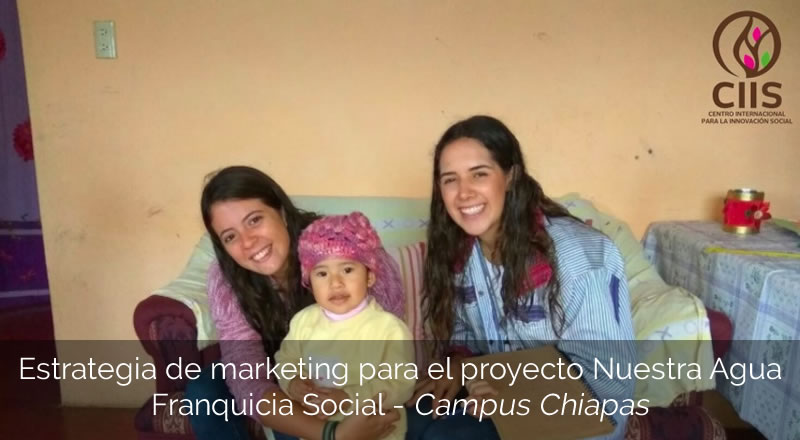
Context
Given the lack of mechanisms for engagement in drinking water systems in the communities, Cántaro Azul decided to implement water purifying systems, called “Blue Kiosks” within the communities. Entrepreneurial women are in charge of the initiative’s operation and maintenance. This program seeks a positive, significant change in the communities to increase the presence and acceptance of the foundation.
Challenge(s)
- Students were set the following challenges:
- Identify successful sales strategies that can be implemented in the community.
- Improve brand positioning.
- Analyze the production costs of the purified water kiosks, identifying opportunities to optimize bottle filling and distribution opportunities.
Outcomes
The outcomes of the intervention were:
- Analysis in Excel of fixed and variable costs to reduce kiosk expenses and provide the foundation with a useful tool for deciding if the business model is replicable and sustainable.
- Awareness campaign regarding the proper use and maintenance of the bottles in order to reduce costs.
- Collaboration with the community to raise awareness regarding the use of safe water to protect health.
- Suggestion to obtain assistance from government programs, such as ProEquidad or other microfinancing systems.
Sustainable Development Goal(s)
The SDGs linked to the challenge are:
- 3- Ensure healthy lives and promote well-being for all at all ages.
- 5- Achieve gender equality and empower all women and girls.
- 15- Protect, restore and promote sustainable use of terrestrial ecosystems, sustainably manage forests, combat desertification, and halt and reverse land degradation and halt biodiversity loss.
Education partner organization
The bridge between the actors of the block and society was:
- Puerta a la Montaña (PAM)
- Population
The sector of the population impacted was:
Nuevo Paraíso community, municipality of La Concordia. Chiapas.
Families from Puerta a la Montaña.
Learn more
The following images (PDF file) show some examples of the activities that students carried out in conjunction with the educational partner organization and the inhabitants of the different communities.

Context
Given the lack of mechanisms for engagement in drinking water systems in the communities, Cántaro Azul decided to implement water purifying systems, called “Blue Kiosks” within the communities. Entrepreneurial women are in charge of the initiative’s operation and maintenance. This program seeks a positive, significant change in the communities to increase the presence and acceptance of the foundation.
Challenges
Students were set the following challenges:
- Identify successful sales strategies that can be implemented in the community.
- Improve brand positioning.
- Analyze the production costs of the purified water kiosks, identifying opportunities to optimize bottle filling and distribution opportunities.
Outcomes
The outcomes of the intervention were:
- Analysis in Excel of fixed and variable costs to reduce kiosk expenses and provide the foundation with a useful tool for deciding if the business model is replicable and sustainable.
- Awareness campaign regarding the proper use and maintenance of the bottles in order to reduce costs.
- Collaboration with the community to raise awareness regarding the use of safe water to protect health.
- Suggestion to obtain assistance from government programs, such as ProEquidad or other microfinancing systems.
Sustainable Development Goal(s)
The SDGs linked to the challenge are:
- 3. Health and well-being.
- 4. Quality education.
- 5. Gender equality.
- 6. Clean water and sanitation.
- 12. Responsible production and consumption.
Education partner organization
The bridge between the actors of the block and society was:
Cántaro Azul Foundation
Population
The sector of the population impacted was:
- Members of the foundation and the families from the communities involved (women, men and children).
Learn more The following images (PDF file) show some examples of the activities that students carried out in conjunction with the educational partner organization and the inhabitants of the different communities.
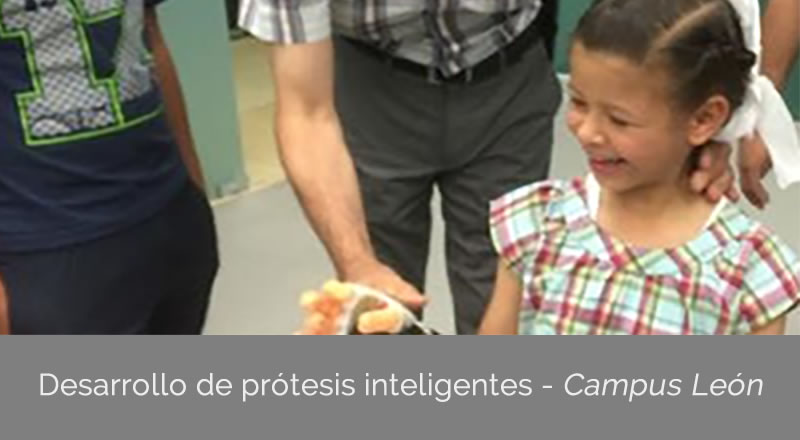
Challenge
Prototype an electronic instrumentation device that makes it possible to develop efficient, low-cost bioelectric prostheses. The development should be based on the needs of the patients of INGUDIS (Guanajuato Institute for People with Disabilities) in order to support the patient in his transition to the use of prostheses. Such development should be based on the needs of INGUDIS (Guanajuato Institute for the Disabled) patients in order to support them in their transition to the use of prostheses.
Intervention outcomes
Formulation, design and development of six functional myoelectric prostheses based on the technological project research, innovation, design and improvement process.
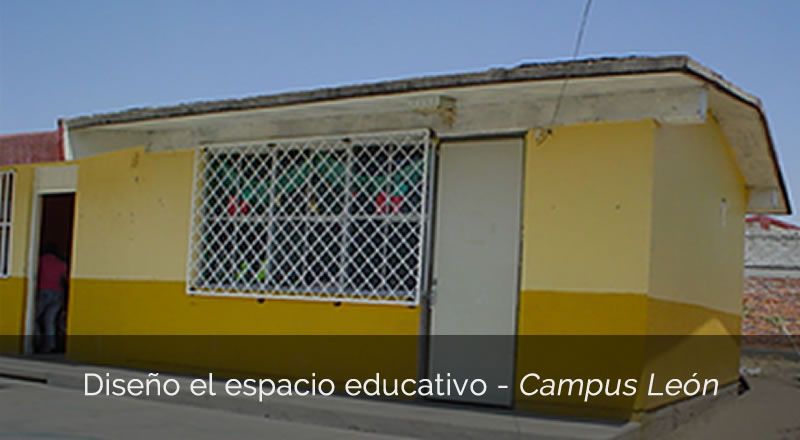
Challenge
Formulate a conceptual project that enables decision making, for the three secondary schools (Secundaria General 23. “Los rizos”, Telesecundaria “La Soledad” and Telesecundaria “El ejido”) in the “Las Joyas” community, which considers facilities, space functionality and the capacity to be replicated.
Intervention outcomes
Participants analyzed the infrastructure of the secondary schools, the needs for improvement (social and structural situations), the space plans and implementation recommendations through case studies.
A conceptual project was formulated for dining halls/cafeterias for the three secondary schools, which were delivered to the Principals of each school.
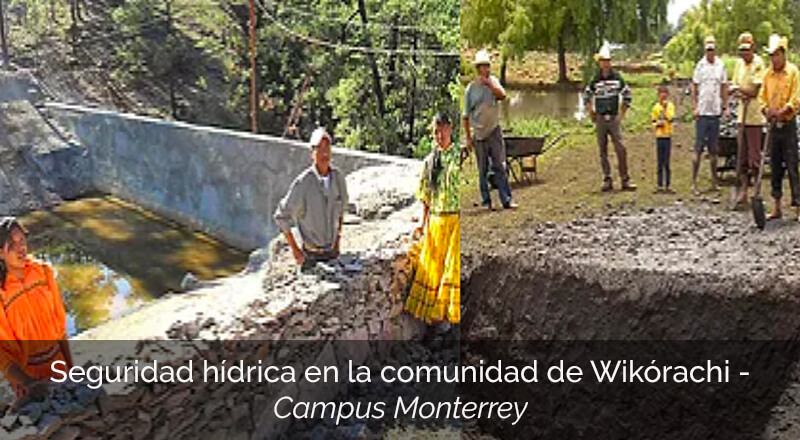
Challenge
Design the drinking water supply system to meet the needs of a rural community spread out over a mountain region, considering conventional, affordable and low-maintenance materials.
Intervention outcomes
Students generated proposals for alternative water resource treatment management, based on balance and quality analyses for the water available in fountains. In addition, they completed a drinking water distribution and wastewater elimination project in the Tarahumara communities.